I was excited about seeing Cloverfield in a way that I haven’t been in years. Perhaps it was because of all the hype surrounding the film, as fanboys and girls across the net were heralding it as the first truly American Godzilla and as one of the most intriguing and innovative monster films in decades. And I’m a sucker for monster films. I loved the simplicity and b-grade savvy of Slither, and the parody and allegory of The Host. Of course, I know that hype shouldn’t affect your judgment of a film’s quality, but I couldn’t help but be a little disappointed by Cloverfield.
The film is presented as footage recovered after a giant monster has terrorized and destroyed the Big Apple. The footage is now presumably being used by government officials trying to sort out the details of the disaster. The contents of the film were recorded by a hand held camera, and the film begins by allowing us get to know the unlucky kids who made the video before the real star of the film stomps its way through the city. While the monster is interesting, if reticent and camera-shy, the human characters are largely unlikeable. During the film’s long and unnecessary exposition, we learn that young Rob, the film’s protagonist, has just slept with his supposed best friend Beth. Rob has, of course, been in love with Beth since the beginning of their friendship, but he’s never had the gumption to express himself until now. To make matters worse, he’s about to leave the country without resolving the situation, but only after his best buds throw him a party, all of which is carefully filmed and documented by his dimwitted friend Hud. At the party, Rob confronts Beth after she arrives with a date, they fight, and Beth goes back to her apartment, leaving Rob to brood all by himself. All of this comes across as typical teenage soap-opera blather, and, like his co-stars, Rob is far too naïve and annoying to be accepted as the tragic figure he’s supposed to be.
Thankfully, the melodrama comes to an abrupt halt just as the film is about to turn into a film-length amateur video version of The O.C. or One Tree Hill. A blackout disrupts Rob’s farewell party, followed by a series of loud explosions, ominous smoke, and the distant rumblings of something far more sinister. As the stunned New Yorkers make their way to the streets, they realize the gravity of the situation when the Statue of Liberty’s charred and clawed head crashes into the street before them. It’s an amazing effect, as are many of the action sequences that follow in which Rob risks life and limb to make his way back to Beth’s apartment because she called him earlier to say that she’s injured and unable to move. Along the way, Rob narrowly avoids being stomped, crushed, burned, eaten alive, and shot by the military, with Hud and his camera dutifully tagging along to record it all while offering lots of “hey dude”-style narration. We see just enough of the creature to pique our curiosity, and we never really learn what it is or why it’s there. It’s an effective technique, and it puts us directly into the action of the film.
The problem is that all of this spectacle really amounts to very little substance or story. Of course, there are some blatant, ham-fisted allusions to 9/11, especially in the horrific image of people on the street fleeing from thick bellows of dark smoke, and Beth’s toppled apartment building, but neither the visceral panic of 9/11, nor its lingering after-effects are explored with any depth in this film in the way that Godzilla explores the decades-long fear and pain caused by the atomic bomb, or in the way that The Host critiques an aggressive American foreign policy that continues to exploit the Asian continent. Even the blatantly campy, b-grade film Slither manages to tell a thoroughly charming story about relationships and small-town life.
However, I’ll admit that it probably isn’t fair to compare Cloverfieldto its predecessors, as this is a different kind of film altogether. For example, the film’s lack of on-screen substance derives from its interest in exploring a new kind of realism. The Blair Witch Project popularized this nearly a decade ago, but Cloverfieldmay very well have perfected it. The found-footage technique in Cloverfieldis often seamless, although not even the most hardened and veteran documentary-maker would keep the camera rolling for as long as Hud manages to. Whatever mental aberration compels him to keep the film rolling can’t be healthy, but the film deftly ignores this fact, and when the technique works, it’s compelling to see this level of cinema verite. Sometimes while watching it, I felt less like a movie-goer and more like part spectator, voyeur, and participant in the film’s action. This technique also puts the audience in charge of determining the significance and meaning of what we have just witnessed, just as we would if we stumbled across the found footage.
In itself, the attempt at this kind of realism is hardly new, but the film’s relationship to its audience is indicative of a new spirit animating this decade’s cinema. Much like the The Blair Witch Project’s clever use of a fake documentary about the supposedly real history of the Blair Witch released weeks before the actual film, Cloverfield utilized an aggressive, viral marketing campaign, possibly the largest of its kind, in which fans, even before the actual name of the film was released, could download wallpapers of the now famous image of a headless statue of liberty, watch trailers that only gave hints of the film’s true subject, speculate about the film in blogs, and find clues and supplemental videos and material in an dazzling assortment of both official and fan-based websites. Through clues found only online, intrepid fans eventually learned that the monster is actually a lost infant looking for its mother, and that the sinister Japanese manufacturer of Slusho! soft drinks is somehow involved in it all. New characters in the story have even been introduced online, and new plot threads and theories have been offered or uncovered, all of which is undoubtedly leading to Cloverfield 2.
This is similar to the technique used to supplement the already brilliantly cryptic show Lost (J.J. Abrams, the producer and driving force behind Cloverfield, is Lost’s executive producer) with “webisodes,” puzzles, and a host of online clues that keep fans, myself included, in a state of near paranoid hysteria. It might not deepen the underlying human drama or spiritual allegory implicit in the show’s narrative by going online to learn that the name of the funeral parlor in last year’s finale is an anagram for “flash forward,” but it’s a fun game to play and it makes fans of the show feel less like passive spectators and more like active participants. Cloverfield’s actual story might be too superficial, but the kind of extended, networked mode of story-telling in which the narrative is dispersed and gradually uncovered in multiple forms of media has never been possible until now.
Cloverfield challenges the old-fashioned auteur theory of film-making, which assumes that a single director, and not the actors, editors, special-effects experts, or, heaven-forbid, the audience, determines the film’s meaning. Hitchcock perfected this kind of film with his deliberate, frame-by-frame orchestration, and his famous, albeit tongue-in-cheek, declaration that actors are like cattle and simply need to be told where to stand and what to say. Films such as Cloverfieldsuggest that this might be an outdated model. On its surface , at least, and in terms of its story-telling, it has no author, no authority governing its sequences—its content is seemingly raw, real, and provided by either the actual characters in the story, or found online by fans. This is all an illusion, and a credit to the film’s clever use of both camera technique and marketing strategy. In many ways Cloverfieldis the perfect film for the age of online social networking, a technology that many have been heralding as a democratizing force in American media. With YouTube, for instance, you do not simply watch or consume the content, you provide the content, share it with friends, and, in some cases, become the content. Cloverfieldstrips the distance between audience and film in much the same way as YouTube strips the distance between audience and content. It was probably inevitable that the spirit of online social networking would eventually impact film, as it’s already had a permanent impact on other established forms of media. Newspapers no longer have the same venerable authority or prestige, and reporters are scrambling to keep up with the appeal of the new media, and the speed of viral, networked coverage of events. Bloggers will routinely break stories first, and, in fact, many seasoned, old-fashioned newspaper reporters are now required to maintain blogs and even post to YouTube. This has even changed the nature of the presidential election, as Howard Dean supporters can attest, and as evident in the world’s first YouTube presidential debate co-hosted last year by CNN in which a virtual audience posted video-questions for the candidates.
Of course, 15 years ago, CNN revolutionized media with its omnipresent, 24-7 news cycle. But the blogosphere has radically accelerated it to the point that anything and everything has now become potential content. In fact, I’ll wager that if we give this trend another decade or so, the concept of news (as in what is new and of singular importance) might become obsolete. If the current state of online culture is any indication, the future is likely to hold no real news, just an endless digital sea of data with no authority or overriding thesis to govern it. It might sound utopian, but the danger is that it’s already becoming difficult to sort fact from fiction in the new media, as the famous case of YouTube sensation Lonelygirl15 suggests. Can we place faith in what we see and read in the hands of pundits, marketers, and amateurs without some sort of professional body to at least partly govern and referee it? Or will these values become irrelevant as they give over to a new aesthetic that values the sheer viral speed at which we can consume, produce, and be entertained?
These are precisely the questions addressed by George Romero’s Diary of the Dead. While Cloverfieldis at least sympathetic with, if not emblematic of, the age of the internet, Diary of the Dead is an explicit critique of it. Romero’s zombie films have always been full of big ideas. As he has put it, “show me a problem and I’ll stick a zombie on it.” His original Night of the Living Dead is really about man’s inhumanity to man, and Dawn of the Dead is really a parody of the grotesque and aggressive nature of suburban consumerism.
Romero’s thesis in Diary of the Dead is even more ambitious and complex than in his previous films. Diary of the Dead is an extended and nuanced argument that the digital age has made us so distracted and self-absorbed that we can no longer process the world around us with any real empathy or reason. This has the potential for political disaster, as the film argues, but Romero probes an even deeper question: before we become so radically networked, virally extended and omnipresent, and before we make ourselves the stars and content of our own media, shouldn’t we first make sure that our basic humanity warrants it?
As with Cloverfield, the plot of Diary of the Dead is minimalist and is presented as amateur video. The film begins with a news reporter narrating a story about the death of an immigrant family, the sort of story that reporters froth at the mouth to cover. However, the story is interrupted when the family suddenly spring back to life and attack the ambulance crew attending to them. The reporter is horrified by this, but only because it’s ruining her story, and her only reaction is an annoyed “For God’s sake, I thought they were dead.”
At this point, the news footage is interrupted by the voice-over of a narrator who explains that “we downloaded this footage off the internet” and that it was “uploaded by the ambulance driver in an attempt to tell the truth.” The narrator then tells us that what we have just seen is the introduction to a cautionary film called The Death of Death that documents the zombie epidemic and collapse of mainstream media and government by piecing together news footage, a horror film involving mummies by Jason Creed (a University of Pittsburgh student), plus miscellaneous downloaded content, home movies, and raw footage from the film crew’s hand held camera.
Let me try to put this in a more precise, mathematical formula:
Diary of the Dead = The Death of Death = news footage + a student film + downloaded footage + home movies + handheld footage.
If this is still confusing, don’t blame me; my head is still reeling from trying to unpeel all the layers to this film. What is so ironic and clever about this is that the narrator’s stated intention is to warn us about the zombies and provide some tips as to how to survive. A simple, linear, and informed guide would probably be the best format for this, and I think this is precisely Romero’s point. The actual zombie menace is embedded in a news story, imbedded in a student film, supplemented by downloaded footage, and tied together with a shaky, hand-held camera. The unlucky person watching this documentary would be zombie-chow long before they figured it all out. It is the sort of disaster, Romero suggests, that would happen if we start relying exclusively on the internet to get the news that matters the most.
To say that Diary of the Dead is self-referential is an understatement. This is a film that feeds on itself like a cannibalistic, self-mutilating ghoul. For example, at one moment in her documentary, Deb films one of her fellow film-makers downloading the internet content that she has already included in the documentary. In another sequence, she pleads with Jason to stop filming and find safe shelter, while another student films their ensuing argument about his reluctance to miss even one second of potential footage. And the film ends by mimicking the entire opening of Jason’s mummy film, only the actor playing the mummy is now truly undead.
Aside from its insistent meta-cinema, and despite Deb’s narration, nothing really ties the film together. It is structured more as a series of vignettes, each with its own viewpoint and subtext. For instance, in one sequence, Andrew Maxwell, Jason’s drunken but still eloquent film professor , lectures on how the incessant, non-stop filming of atrocities in places such as Iraq detaches us from it in a way that makes us culpable. By mediating everything we see, we feel a false sense of empowerment and absolution and are less likely to truly understand or engage with what we see. We become as apathetic as zombies, and our media has therefore become our very own diary of the dead. It’s a politically dangerous and morally compromised stance, as the film’s tagline, “Shoot the Dead,” also suggests. There are also vignettes about gender and realism in the horror genre, plus segments involving the national guard that illustrate what happens when people who are untrained and unprepared for war (be it with terrorists or zombies) are suddenly given that role. Romero packs a lot of politics into a relatively short amount of time, as everyone in the film has their own point-of-view that they feel entitled to either upload or profess.
Somewhere in all of this, I swear to God, are actual zombies. But the film is so busy with its constant self-referencing and multiple viewpoints that I had a hard time finding them. I found myself yearning for the simpler, more innocent pleasures of watching zombies eat people. Such moments are rare in this film, and I know it’s all intentional. Romero makes it clear that the film’s multimedia format is a lousy substitute for the direct communication of ideas. For example, in my favorite scene from this movie, Deb and her crew stop at an Amish farm to repair their van. The farmer is mute and tries to desperately communicate with the kids as they sneer and snicker behind their cameras. He finally gets his point across by simply writing the word “hurry” and then “back door” on his little hand held chalkboard. They’re all about to be gang-eaten by a pack of hungry zombies and he’s just provided them with their only means of escape. They’re just lucky he didn’t waste time by trying to email them the message.
Diary of the Dead goes a long way in arguing that the new media may not be the best model for making genuine films, and that in the digital age, we’re even more obligated to sometimes put aside our technology and actually think about what we’re documenting. But in making his case, Romero has made a film that is tiring to watch. It’s an important film with big ideas in the way that Cloverfield could never be, but in many ways, Cloverfield is better, if only because it’s more entertaining and could point the way to a new kind of viral story-telling whose full potential has yet to be realized. Still, the peek-a-boo logic of its neo-realism made me miss traditional monsters in the same way that Diary of the Dead made me miss zombies. All the flippant teasing in Cloverfield and fussy preaching in Diary of the Dead made realize that I still prefer my horror films the same way I prefer my alcohol. Nothing is wrong with a fruity concoction of exotic mixtures shaken and stirred in a loud, trendy bar every now and then, but you really can’t beat the simplicity of a whisky straight up.








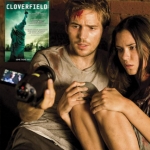
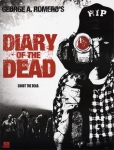



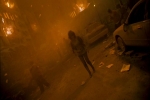
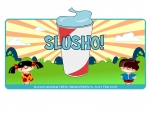
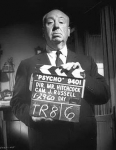

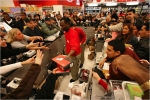

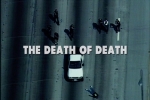
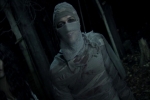
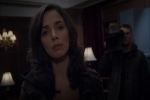
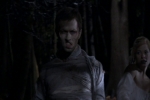
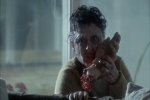
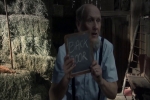
Subscribe Without Commenting